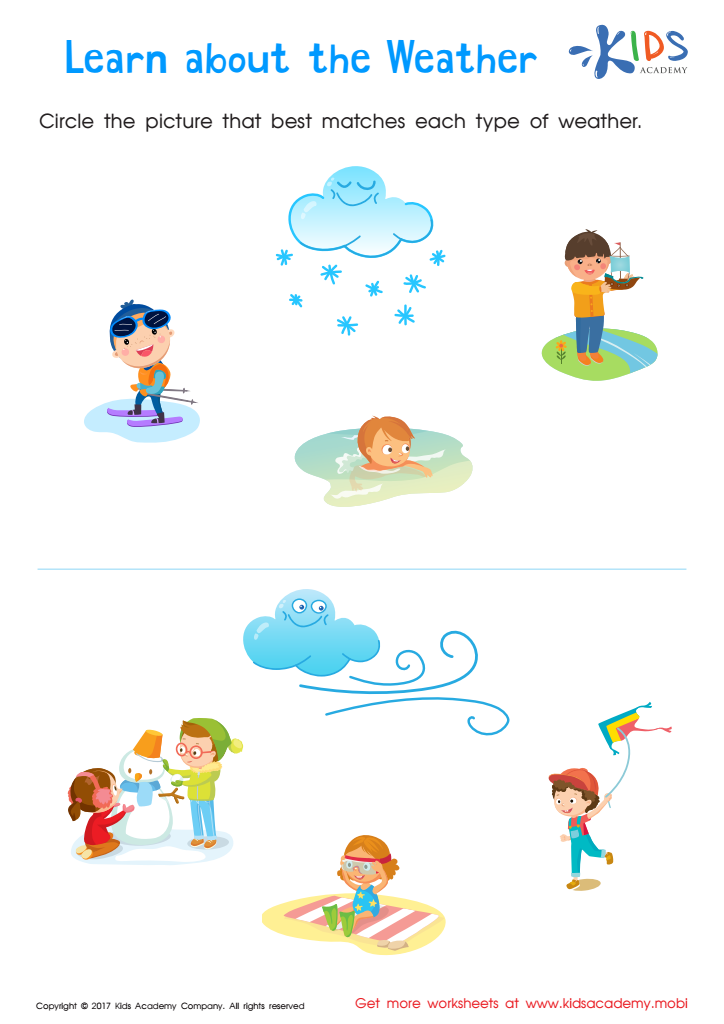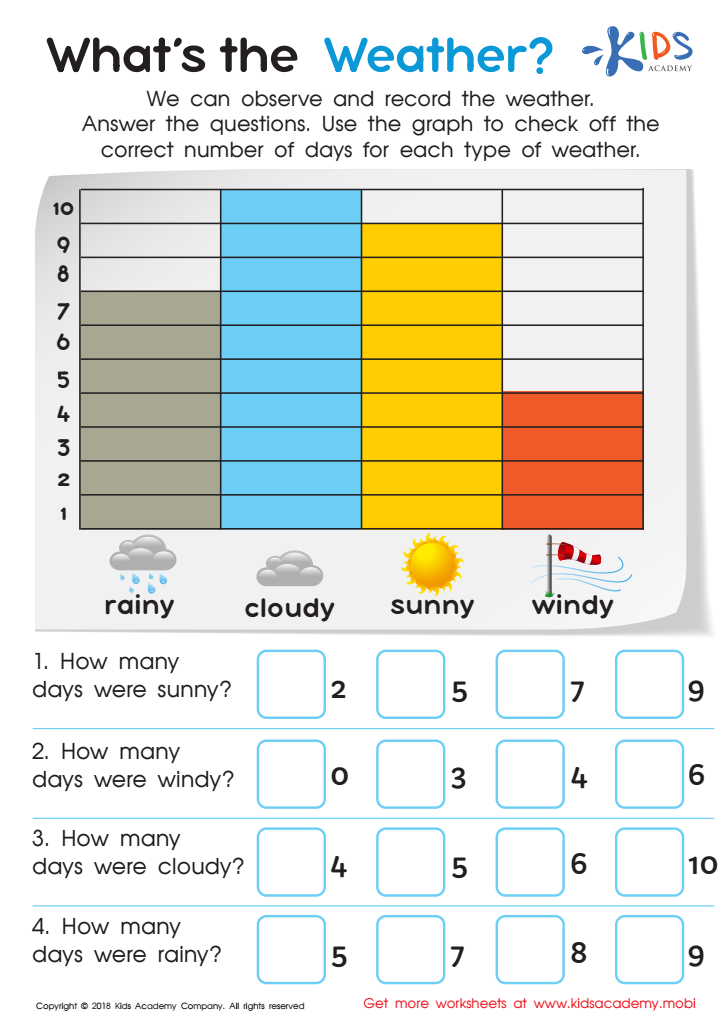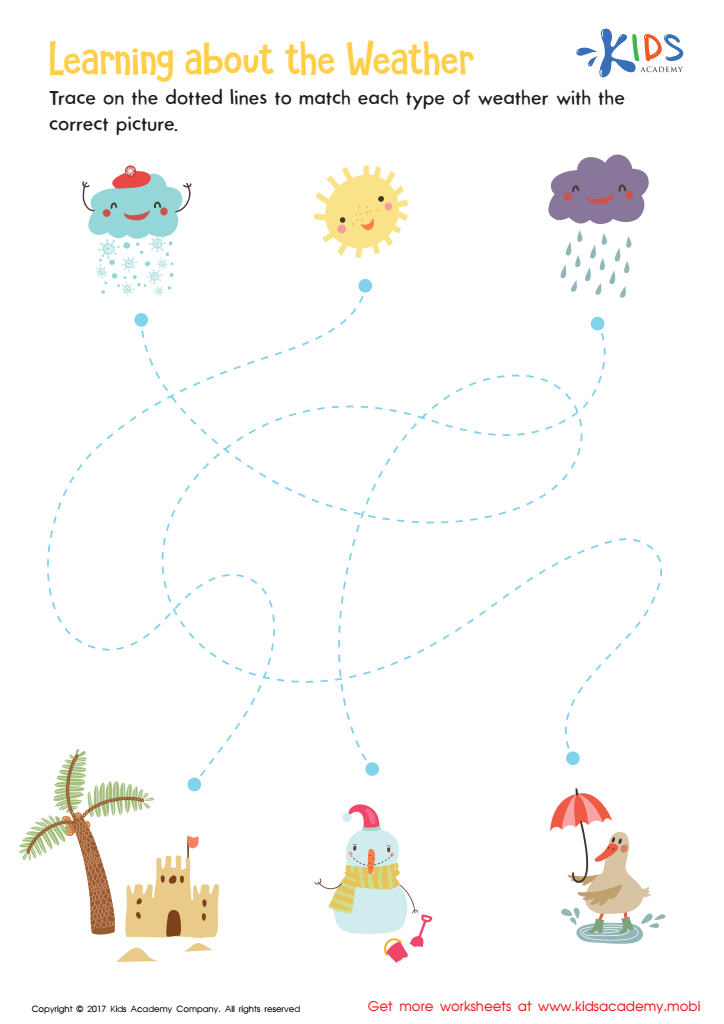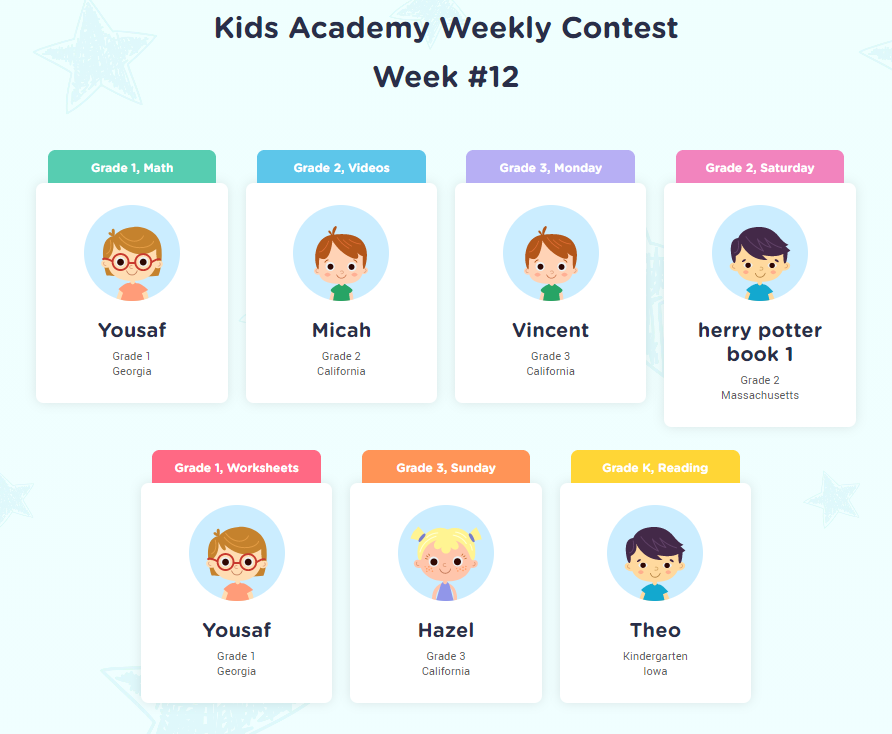Weather identification Normal Worksheets for Ages 6-8
3 filtered results
-
From - To
Discover engaging Weather Identification Normal Worksheets designed for children ages 6-8! These interactive activities help young learners recognize and understand various weather types and their characteristics. Perfect for enhancing observational skills, students will explore concepts such as sunny, rainy, cloudy, and snowy weather through fun illustrations and engaging exercises. Our worksheets not only promote critical thinking but also provide an excellent resource for teachers and parents alike, fostering a love for learning about the world around them. Empower your little ones with essential weather knowledge that lays the foundation for their understanding of the environment. Download and start learning today!


About the Weather Printable


What's the Weather? Worksheet
Weather identification is crucial for children aged 6-8 as it enriches their understanding of the world around them. At this developmental stage, children are naturally curious and eager to explore. By teaching them to identify different types of weather—such as sunny, rainy, windy, and snowy—parents and teachers can help cultivate a sense of awareness and curiosity about natural phenomena.
Understanding weather patterns also has practical benefits. For example, recognizing when it is appropriate to wear a jacket or carry an umbrella fosters independence and decision-making skills. Additionally, discussions about weather can comfortably introduce concepts such as seasons, temperature, and climate change, setting a foundation for scientific literacy.
Moreover, linking weather identification to daily activities reinforces learning. Teachers can incorporate weather into lessons through art, storytelling, or even outdoor play that reflects current conditions. This interactive learning makes concepts more relatable and enjoyable, promoting verbal and observational skills.
Ultimately, fostering weather identification skills not only stimulates cognitive development but also encourages critical thinking about environmental issues. Thus, parents and teachers play a pivotal role in equipping children with necessary life skills while fostering a deeper appreciation for their surroundings.
 Assign to My Students
Assign to My Students
















